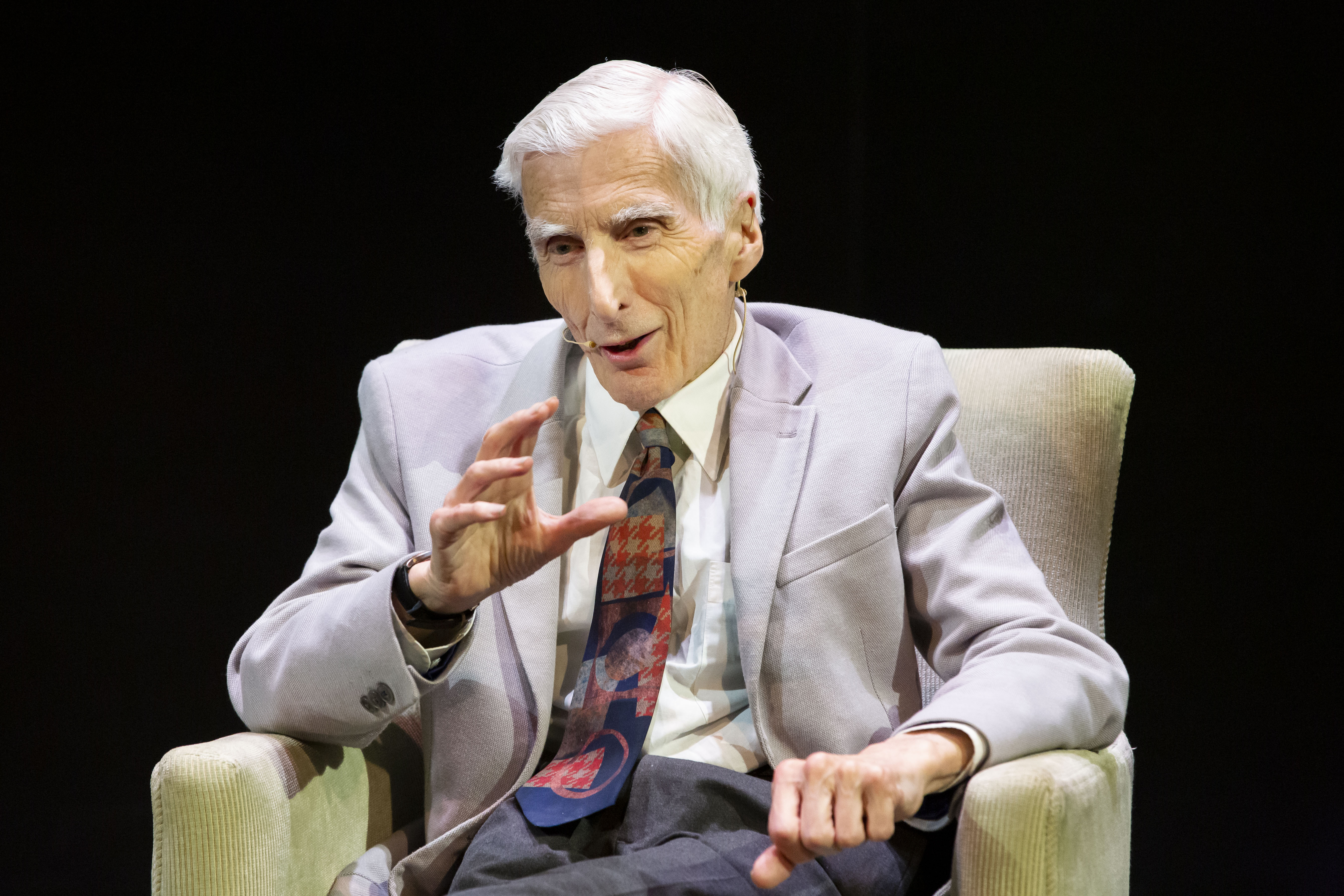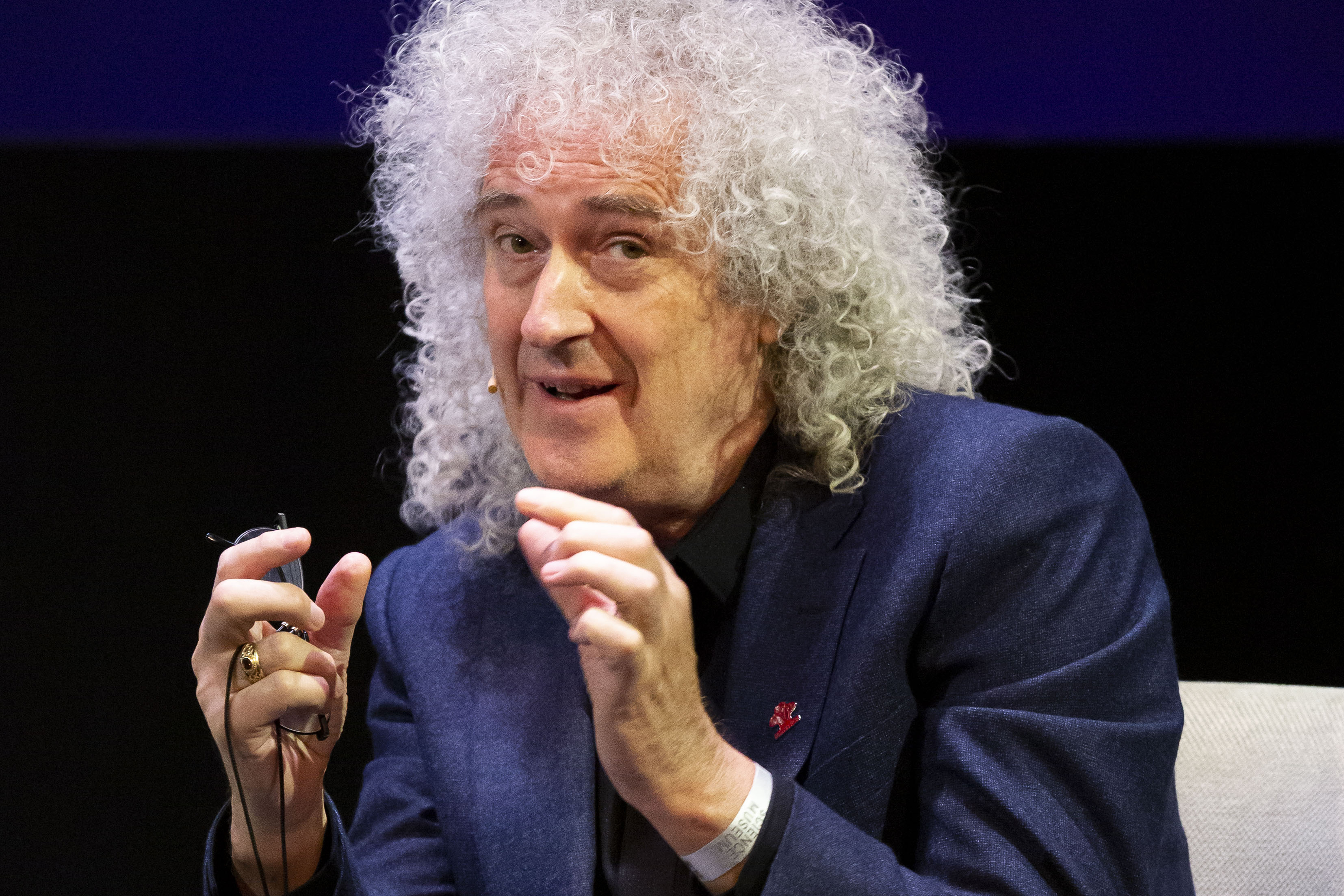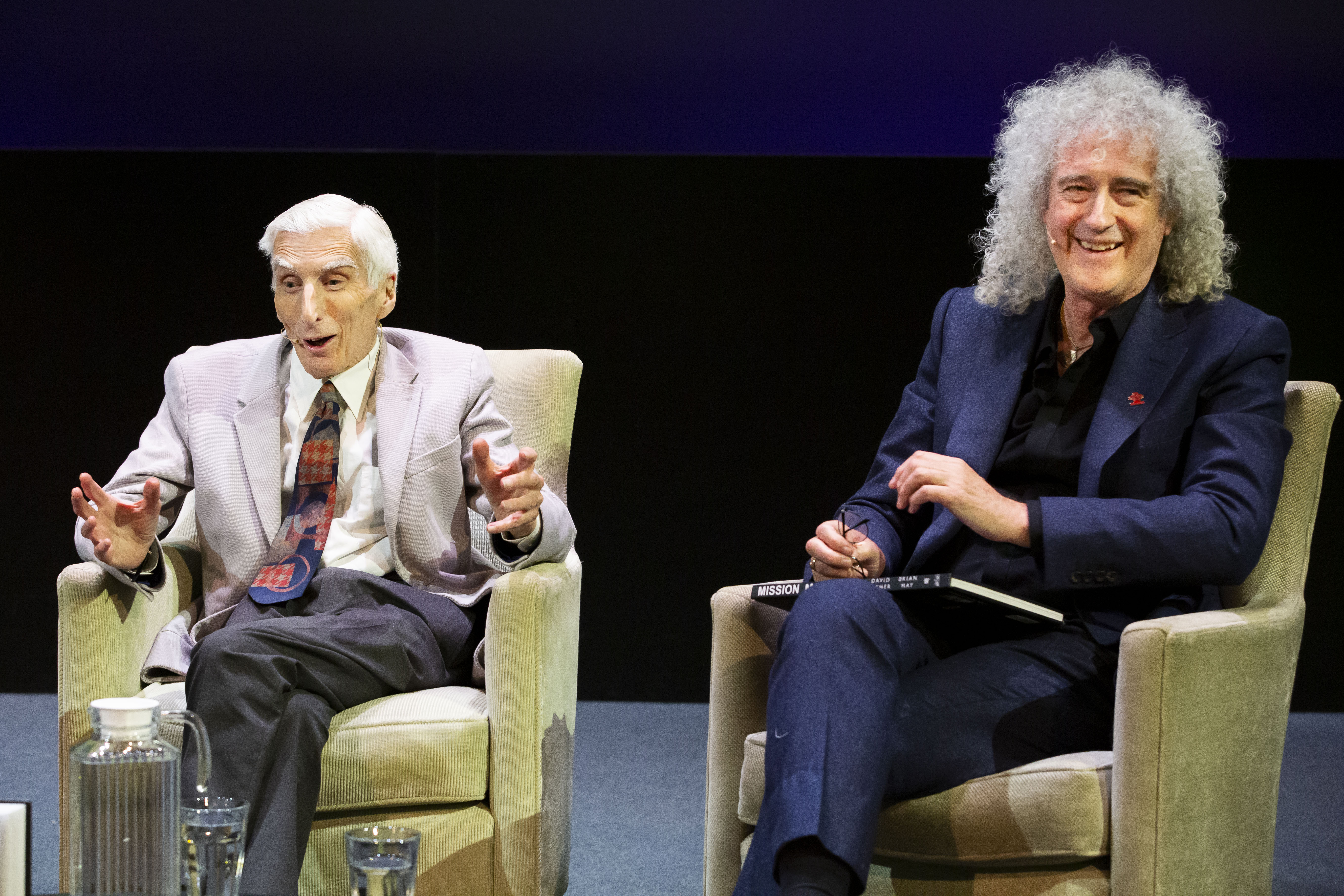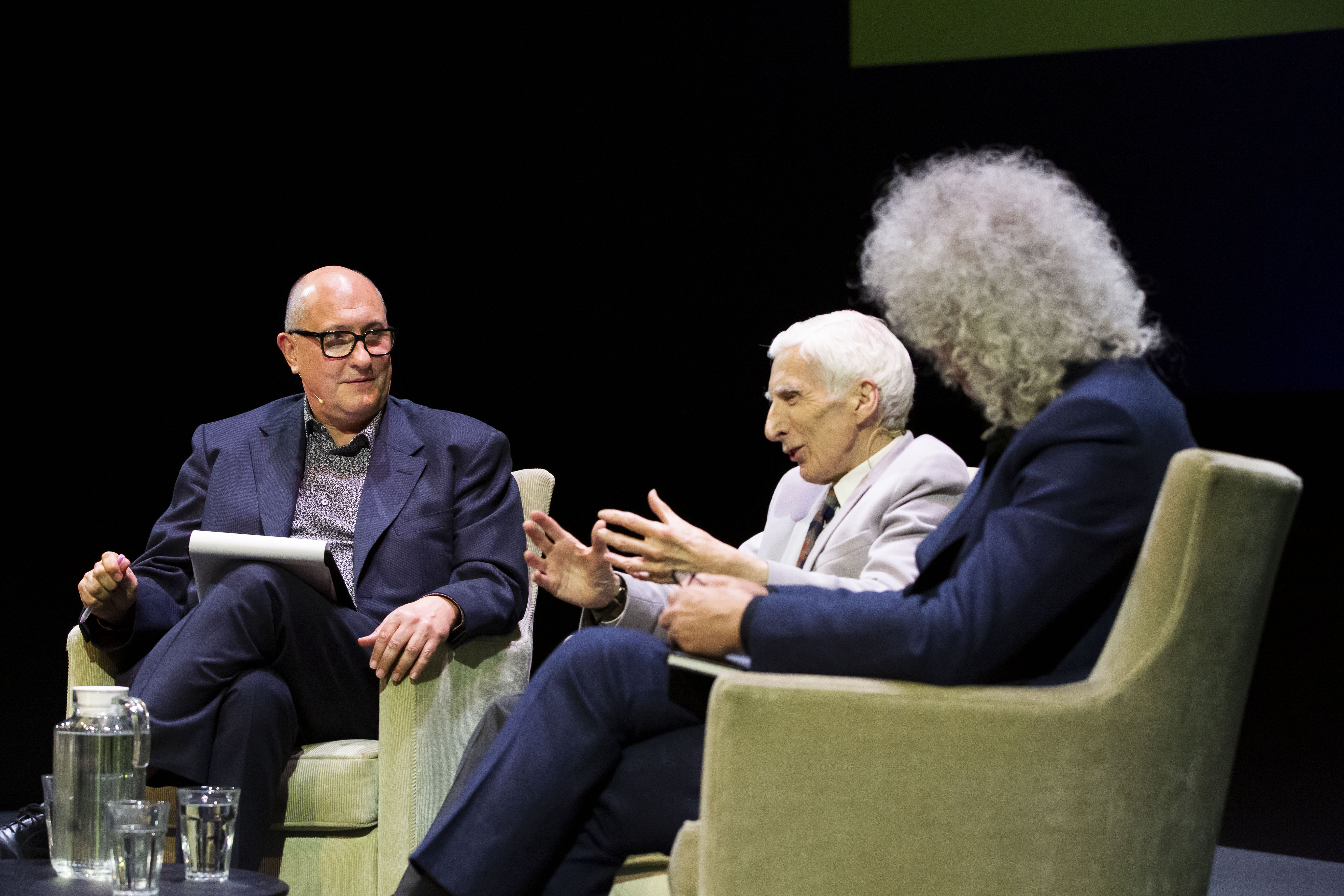Two rock stars of astronomy met in the Science Museum a few days ago to celebrate humankind’s greatest adventure, the first Apollo moon landing in July 1969. In the opening event of the Museum’s Summer of Space season, Lord Rees and Dr May discussed the past, present, and future of space travel with the museum’s Science Director, Roger Highfield.
Lord Rees, Astronomer Royal, is the author of On the Future: Prospects for Humanity, which explores space along with themes such as robotics, AI and the threat of climate change and is ‘written from the viewpoint of a scientist, citizen and worried member of human species.’ However, he confessed to a packed IMAX auditorium that: ‘any predictions I make should not be taken too seriously.’

Astrophysicist and Queen guitarist and songwriter Dr Brian May has written Mission Moon 3-D with David Eicher, published by The London Stereoscopic Company, a 3D account of the events around Apollo, which demanded ‘months and months’ of work, sometimes when he was on tour with Queen.
Dr May discussed a range of subjects with Highfield, from the use of stereo images on space missions to May’s single New Horizons, released when the eponymous NASA spacecraft encountered Ultima Thule, the farthest-flung celestial body ever to be visited (‘What rhymes with Ultima Thule?’ Dr May asked.)

He also played a role in ensuring the archive of Patrick Moore, the outreach astronomer (‘the greatest of all time’) and presenter who helped map the moon, became part of the Science Museum Group collection. It was Moore who had encouraged May to finish his doctorate after a 30-year break, achieving his PhD from Imperial College London on the Motions of Interplanetary Dust in 2007.
Together, they considered what would have happened if ‘these brave men’ Neil Armstrong and Buzz Aldrin had perished in their attempt to set down their lunar module (a model of which can be seen in our Exploring Space gallery) on the moon, an eventuality for which a Presidential speech had been prepared in advance: ‘Fate has ordained that the men who went to the moon to explore in peace will stay on the moon to rest in peace.’

They pondered a revival of the ‘Apollo spirit’ and Lord Rees discussed the benefits of a moon base in the Shackleton crater at the lunar south pole, adding that he believes that the future of human exploration is more likely to lie with privately-funded space-farers.

Lord Rees also discussed the benefits to humanity of terraforming Mars versus curbing climate change here on Earth and speculated about a distant ‘post-human’ future of space exploration, when our descendants may well be electronic rather than flesh and blood.
The museum’s Summer of Space also includes its biggest ever sleepover: the Apollo Astronights; IMAX screenings of Apollo 11: First Steps Edition, which uses never before seen footage; a special preview of BBC Two’s new docu-drama 8 Days: To the Moon and Back; a screening of Smithsonian’s Apollo’s Moon Shot film, with a live score by Teeth of the Sea, introduced by former NASA astronaut Wally Funk; and space-themed workshops and activities as part of the Great Exhibition Road Festival.
